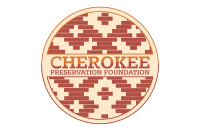Mapping Mountain Treasures: Wilderness on the line
A sweeping review of the Pisgah and Nantahala national forests will get under way in a matter of months, a behemoth, multi-year process that will layout a new blueprint for how the forests are managed for the first time in 20 years.
Environmentalists have been prepping for the forest plan for more than five years already. After all, the fate of 1.1 million acres of public land in the mountains hinges on the vision mapped out in the forest plan.
The impressive size of the Pisgah and Nantahala national forests, with tracts scattered the length of the Western North Carolina mountains, predicates a strategy. One could even call it picking your battles.
Conservation groups can’t go to the mat over every corner of national forest. Instead, they must decide which areas of the national forest are the most important ecologically.
The Wilderness Society has taken the lead in the effort to define these tracts — knighting them with the special designation of Mountain Treasures. Picking which would be held up as the crowned jewels of the Pisgah and Nantahala involved myriad environmental and conservation groups.
In 2007, a major meeting of environmental groups from across WNC convened at the N.C. Arboretum in Asheville to refine what tracts would make the cut.
Related Items
“We had a round robin and looked at every area,” said Brent Martin, Southern Appalachian director for The Wilderness Society, based in Sylva. “We had a pretty intense public process.”
Mirroring the format of government agencies, they even had their own 30-day public comment period.
The result: a list of 41 Mountain Treasures encompassing 300,000 acres. The Mountain Treasures represent the best of the Pisgah and Nantahala.
That was only the first step, however. Now, conservation-minded groups have to decide which of the Mountain Treasures to elevate for wilderness designation.
The wilderness debate
Wilderness areas — specially designated tracts within the national forest — are set aside for the highest level of ecological protection. There’s no logging in wilderness areas obviously, or road building. But there’s also no mountain biking, no ATVs, no chainsaws, or any other sort of mechanized equipment.
“We believe wilderness is the highest level of protection you can give a piece of land,” said Jill Gottesman, Southern Appalachian outreach coordinator for The Wilderness Society.
Designated wilderness areas in the Pisgah and Nantahala encompass 68,000 acres. It’s a small percentage of the 1.1 million acres of national forest.
The Wilderness Society believes more tracts are deserving of wilderness protection. Martin and Gottesman hope the next forest plan will identify candidates for wilderness.
Indeed, most national forests emerge from the planning process with a proposal for new wilderness areas. The national forest service here anticipates at least one or two recommendations for new wilderness designations coming out of the plan, according to Mary Noel, the national forest officer who will oversee the forest planning process.
The Mountain Treasures are starting points, but obviously not all 41. So which ones? That’s something Martin hopes to narrow down on the front end and not end up in a showdown in the midst of the planning process.
“I would rather go through the forest planning process having established a productive dialog way in advance among forest interest groups than get way into the middle of what is historically known to be a fairly chaotic, divisive situation,” Martin said.
Finding common ground
Almost a year ago, well ahead of the forest plan kick-off, The Wilderness Society launched a series of hikes and camporees to get people out in the forest enjoying these special places.
“The great goal is that social interaction of being out in the woods with other like-minded folks from the area,” Gottesman said. “This is building a group of on-the-ground advocates who have physically been to and can talk about each of the 41 Mountain Treasure areas.”
The Carolina Mountain Club, the region’s largest and most influential hiking club, has partnered in the hike series.
Gottesman in particular has been logging serious trail miles in the Mountain Treasures tracts. Her goal is also to build a scientific database, taking GPS points of old growth stands or rare microhabitats within the Mountain Treasure area.
“Anything that can help us paint the picture of either ecological or wilderness characters of these areas, anything that can help us build the case for further protections in the forest plan,” Gottesman said.
Dozens of outdoor and environmental groups will be angling for a seat at the table during the forest planning process. (see related article.) Between them, they have thousands of members and represent hundreds of thousands of national forest users.
Those weighing in on the future of national forests don’t stop with recreational interests. There’s industry groups, too — and not just the traditional logging and timber companies. The forest plan will spell out whether and where wind turbines should be allowed, or whether the forest can be harvested for biomass energy.
Confronting these forces is where a consensus among recreation groups could be critical.
“I don’t want to go into the planning process without sitting down with the mountain biking community and talking about what their interests are, or the horseback community or the hunting community,” Martin said. “The goal is to go into the planning process with a pretty broad-based consensus on what a good forest plan would look like. That is no easy task but it is a noble objective I think.”
Hiking groups arguably would be the closest allies in favor of designated wilderness areas. But as the primary foot soldiers when it comes to maintaining trails, hiking groups aren’t always fans of wilderness designation.
In wilderness areas, trail volunteers are barred from using chainsaws and other mechanized equipment. Tending to miles of trails with nothing but loppers, cross-cut saws and adzes takes far more sweat and muscle.
“If they say, ‘we don’t want it to be wilderness because we can’t take our chainsaw in there,’ well, there you go, you have a break down in the process,” Martin said.
Mike Milner, a horseback rider in Haywood County with a local chapter of the Back Country Horsemen, said his club regularly takes machinery, from chainsaws to bush hogs, into the national forest to clear trails and old roads from over growth. In wilderness areas, the work would be exponentially harder and out of reach for many of their trail volunteers.
“Wilderness in some ways is a great thing. It preserves nature,” Milner said. “But we would lose a lot of people. It is hard to get volunteers to do that kind of physical work.”
To combat pushback from trail volunteers, the Wilderness Society launched the Southern Appalachian Wilderness Stewards, a cooperative trail crew that provides training and assistance for trail maintenance in wilderness areas where only hand tools are allowed.
Jeff Johnson, a ruffed grouse hunter from Macon County, doesn’t like the idea of curtailing logging by designating more of the national forest wilderness areas. He thinks forests should be actively managed.
“Wilderness areas, you just sit back and look at it,” Johnson said. “We can send all the forest people home if we do that.”









